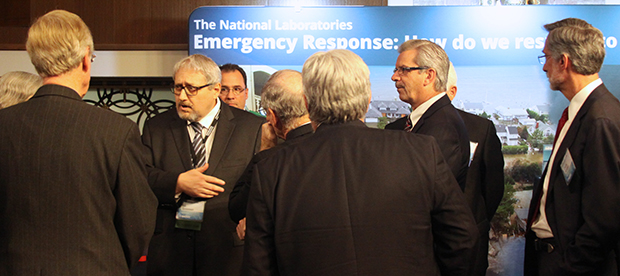LAWRENCE Livermore National Laboratory’s (LLNL’s) enduring mission for the Department of Energy and its National Nuclear Security Administration is helping to make the nation—and the world—safer and more secure through world-class science, technology, and engineering. This annual report is a snapshot of notable progress made in FY 2016 that advanced the frontiers of science and technology in service to national and international security.
During FY 2016, Laboratory researchers applied the unique tools of the Stockpile Stewardship Program to fulfill our core nuclear security mission of assessing and certifying the aging nuclear weapons systems in our care. We also mapped out options to extend the life of the W80-4 warhead for the U.S. Air Force’s Long-Range Standoff missile. For example, we demonstrated that new, 3D printing techniques can produce parts with optimized material and engineering properties at lower cost and with much faster production times.
Weapons system certification relies heavily on physics models validated by experiments, many of which are performed at the National Ignition Facility (NIF). Researchers at NIF study the physics of a functioning nuclear weapon at extreme temperatures and pressures, expanding scientific knowledge on many fronts.
Leading-edge high-performance computing (HPC) is required for stockpile stewardship and other national security needs. Livermore HPC scientists are preparing for the arrival of Sierra, a next-generation supercomputer much more capable than today’s most powerful machines. In addition, national security sponsors are leveraging LLNL expertise in “big data” to extract meaning from enormous amounts of information. This expertise is central to a partnership we have formed with the National Cancer Institute to fight cancer.
This annual report also highlights experiments aimed at improving capabilities to detect low-yield nuclear events and to better prevent and respond to weapons-of-mass-destruction terrorism. LLNL and an industrial partner made a forensics breakthrough: biological identification based on information encoded in human hair proteins. Three new elements, discovered by Laboratory scientists and collaborators, were added to the periodic table. And, to help mitigate climate change, researchers combined biology and 3D printing to convert methane to methanol.
These successes would not have been possible without an outstanding workforce with access to one-of-a-kind research facilities—people who bring new ideas, work with integrity and zeal, and thrive in an inclusive work environment. We are honored that LLNL was named to the Forbes 2016 list of America’s Best Employers—and to be the only national laboratory on the list.
We are also strengthening safety and security, investing in infrastructure to enhance workplace quality, and taking innovative approaches to modernize the nation’s nuclear weapons enterprise.
Enhancing national security in a rapidly changing world requires vigilance, innovative thinking about emerging threats, productive partnerships with industry and government, and continuing to leverage Livermore’s enormous scientific, technological, and engineering expertise and resources. Lawrence Livermore is moving on all fronts to carry out its critical mission.





